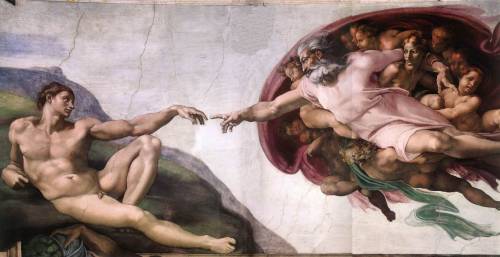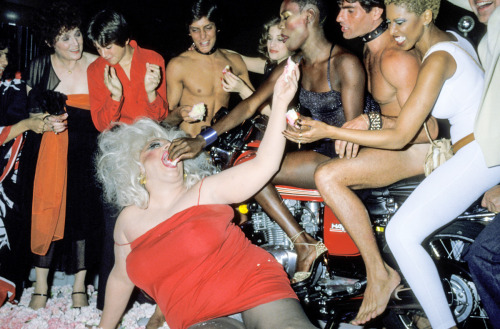Josephsapha - ❦


More Posts from Josephsapha and Others
Took me until about halfway through college before I realized “study” means “play with the material in a variety of ways until you understand it” and not just “read the assigned chapters and do the homework” and I think that probably should have been discussed at some point prior to that.




Dior Homme spring 2002 “Boys Don’t Cry” Bloodwound Harness — Inspired by Johnny Thunders & The Heartbreakers
aspiring teenage slaughter avatar writing self insert fanfiction about getting sold to grifter’s bone
tma AU where The Distortion staunchly refuses to feed off 12 year olds because every time a 12 year old ends up in its corridors theyre like “The color yellow? Infinite windowless hallways outside reality with a fucked up little creature in them? Oh shit! It’s the backrooms!” and The Distortion does not like that at all
This is kind of a large question so I apologize but I guess I'm curious on how you're able to get such specific or like. unique (i mean this in a good way) answers from tarot? Like your "what magic should i learn next" stuff or how to pick up what a spirit can do through tarot. like idk how to translate these cards into what the spirit is trying to say
Hi!
There's no easy answer to this question, partially because I've now been reading tarot for almost exactly 16 years. This isn't at all to say that it's just the passage of time, but that in that amount of time I've done tons and tons of different things to expand my understanding of, and usage, of tarot.
Tarot didn't come to me very easily, and part of that journey was doing a lot of experimentation in an effort to figure it all out. My reading practice is still very much typified by a huge amount of experimentation and custom reading methods.
It hasn't been a linear process at all. I go through periods of months (or more!) where tarot just doesn't click for me, at all. So just because I picked up my first tarot deck 16 years ago doesn't mean that I've kept a consistent practice (I'm just now getting back into it after just such a fallow period ^-^)
My feelings on experimentation is that it gives me new ways to think about not only the cards, but also spreads, methodologies, and readings as a whole.
In addition, my experiments with other forms of divination (most especially casting lots, energy readings, and playing card readings) have heavily influenced my tarot readings.
Here is a post I wrote that I think expresses my feelings on experimenting within tarot.
Here are some examples of tarot experiments I've performed, and/or methodologies I've explored. It's these sorts of things that have been building blocks in my abilities in tarot. But no single one of them was a "key."
Elemental dignities: The elements of the cards dictates how they interact with each other. Air + fire can mean a supercharged firestorm, but water + fire can mean a controlled fire under a stewpot, or blocked progress of the fire. This experiment helps with understanding how cards can link together, and how energy can flow within a spread.
Elemental landscapes: Spreads are laid down in lines or grids and each card represents one aspect of the landscape. You must brainstorm and choose your own meanings. E.g., 8/wands is an exploding volcano. Queen/Cups is a lake inhabited by mermaids. Read the flow of weather patterns and energies through the spread as an answer to the question. This experiment helps with intuitive reading and working with a spread as a whole, instead of focusing on individual cards.
Elemental portents: Assign an element to your question. Draw a card. If the element on the card agrees with the element of your question, the portent is good; if it disagrees, the portent is bad. This experiment helps with learning how to phrase questions and how the question themselves can influence the balance of the deck.
Astral landscapes: This was an elaborate system I built around the Wooden Tarot. I worked with each card to assign it a mystical association that could occur in an astral landscape. The major arcana were spirits who could travel across the landscape. Each spread was like a playing board of a generated landscape and the spirits that interacted inside of it. This experiment was fun for considering the metaphysical ramifications of the energies of the cards themselves.
Numerical virtues: The number value of the card indicates its power and magnitude in the spread. 2 and 3 value cards are always of smaller power and significance. 10 and court cards are always of higher value. Aces may be high or low. This experiment gave me a new way of thinking about importance of each card, and how to blend magnitudes of significance.
Infinite directional wheel: I wrote a post on this actually, but basically you can keep placing cards forever in the cross-quarter positions. It's a meditation on the concept of elements and directions within witchcraft. Also, an extremely useful spread. This was a vital experiment for me in understanding spreadwork, flow of information, and linking cards.
Card doubling and tripling: Place two (or 3) cards together and determine the meaning as if it's one single card; there is no border, and the images combine with each other. The pictures and meanings of each combine into a single card.
Card doubling and tripling, but in spreads: For each position in the spread, place two cards (or three cards!) in place of one. Read the dyads or triads as if they are a single card. It isn't beginning/middle/end; it's a single triple-complex card! These doubling experiments helped me with the concept of card linking and blending meanings into unique interpretations.
Custom meaning sets: Basically, swap out all the default meanings with your own. Extremely useful IMO in learning how sets of meanings work together, and how to balance sets of meanings. I wrote a post on it here. These experiments have perhaps been the most vital for me in developing new interpretations. I believe that the magical skills readings you referenced were the result of custom meaning sets.
No meaning sets: Instead of using any card meanings, all spreads are resolved using a combination of elemental portents and numerical virtues. I.e., the element and number of a card in relation to other cards in the spread determines the reading. Here, the experimentation is allowing the cards to have strict, defined roles within a spread that can't be overwritten by personal intuition.
As a final note, I highly, highly recommend recording every reading you do and every card you draw. For the first couple years of my practice I recorded all readings, and it was a huge boost to my learning.
-
 kyleeslays liked this · 2 weeks ago
kyleeslays liked this · 2 weeks ago -
 starlight-dazed reblogged this · 2 weeks ago
starlight-dazed reblogged this · 2 weeks ago -
 strangeritual liked this · 2 months ago
strangeritual liked this · 2 months ago -
 nemuri-is-dead liked this · 2 months ago
nemuri-is-dead liked this · 2 months ago -
 isntshesomething liked this · 3 months ago
isntshesomething liked this · 3 months ago -
 mezzoloth liked this · 3 months ago
mezzoloth liked this · 3 months ago -
 blindedbyurstars liked this · 3 months ago
blindedbyurstars liked this · 3 months ago -
 giselnotgiselle liked this · 3 months ago
giselnotgiselle liked this · 3 months ago -
 luxradio888 liked this · 3 months ago
luxradio888 liked this · 3 months ago -
 nuclearerror liked this · 3 months ago
nuclearerror liked this · 3 months ago -
 allthatglitters-isgay liked this · 4 months ago
allthatglitters-isgay liked this · 4 months ago -
 archivist-prime reblogged this · 4 months ago
archivist-prime reblogged this · 4 months ago -
 iouseki reblogged this · 4 months ago
iouseki reblogged this · 4 months ago -
 iouseki liked this · 4 months ago
iouseki liked this · 4 months ago -
 justindemus liked this · 4 months ago
justindemus liked this · 4 months ago -
 finalpam8000 liked this · 4 months ago
finalpam8000 liked this · 4 months ago -
 calmdownzuza liked this · 5 months ago
calmdownzuza liked this · 5 months ago -
 sortorm reblogged this · 5 months ago
sortorm reblogged this · 5 months ago -
 someprouphet liked this · 5 months ago
someprouphet liked this · 5 months ago -
 guilleries liked this · 5 months ago
guilleries liked this · 5 months ago -
 sail-to-live liked this · 5 months ago
sail-to-live liked this · 5 months ago -
 kaiyves-backup liked this · 5 months ago
kaiyves-backup liked this · 5 months ago -
 jimstares reblogged this · 5 months ago
jimstares reblogged this · 5 months ago -
 musings-from-earth liked this · 5 months ago
musings-from-earth liked this · 5 months ago -
 fractal-heartbeats liked this · 5 months ago
fractal-heartbeats liked this · 5 months ago -
 d-a-r-k-s-k-i-n liked this · 5 months ago
d-a-r-k-s-k-i-n liked this · 5 months ago -
 ometochtli2rabbit liked this · 5 months ago
ometochtli2rabbit liked this · 5 months ago -
 freakquency96 reblogged this · 5 months ago
freakquency96 reblogged this · 5 months ago -
 freakquency96 liked this · 5 months ago
freakquency96 liked this · 5 months ago -
 chroniclesofnadia111 reblogged this · 5 months ago
chroniclesofnadia111 reblogged this · 5 months ago -
 whathenunsaid liked this · 5 months ago
whathenunsaid liked this · 5 months ago -
 shkiia liked this · 5 months ago
shkiia liked this · 5 months ago -
 jimstares liked this · 6 months ago
jimstares liked this · 6 months ago -
 unahojacae liked this · 6 months ago
unahojacae liked this · 6 months ago -
 guyalice liked this · 6 months ago
guyalice liked this · 6 months ago -
 girl-like-substance liked this · 6 months ago
girl-like-substance liked this · 6 months ago -
 hheartout liked this · 6 months ago
hheartout liked this · 6 months ago -
 negative-tension liked this · 6 months ago
negative-tension liked this · 6 months ago -
 anonsally liked this · 6 months ago
anonsally liked this · 6 months ago -
 rumshop reblogged this · 6 months ago
rumshop reblogged this · 6 months ago -
 rumshop liked this · 6 months ago
rumshop liked this · 6 months ago -
 v-as-in-victor reblogged this · 6 months ago
v-as-in-victor reblogged this · 6 months ago -
 adelphicoracle reblogged this · 6 months ago
adelphicoracle reblogged this · 6 months ago -
 adelphicoracle liked this · 6 months ago
adelphicoracle liked this · 6 months ago -
 marjorierose liked this · 6 months ago
marjorierose liked this · 6 months ago -
 vamperilous liked this · 6 months ago
vamperilous liked this · 6 months ago -
 justanoldfashiontumblog liked this · 6 months ago
justanoldfashiontumblog liked this · 6 months ago -
 lies reblogged this · 6 months ago
lies reblogged this · 6 months ago -
 lies liked this · 6 months ago
lies liked this · 6 months ago -
 icarus-suraki reblogged this · 6 months ago
icarus-suraki reblogged this · 6 months ago







